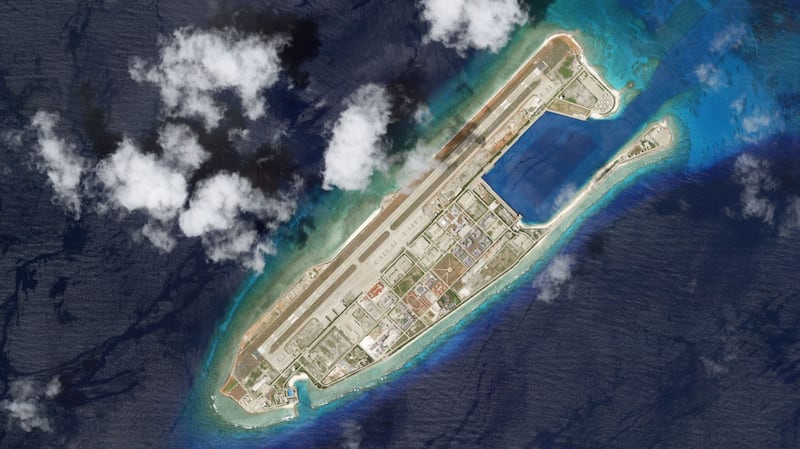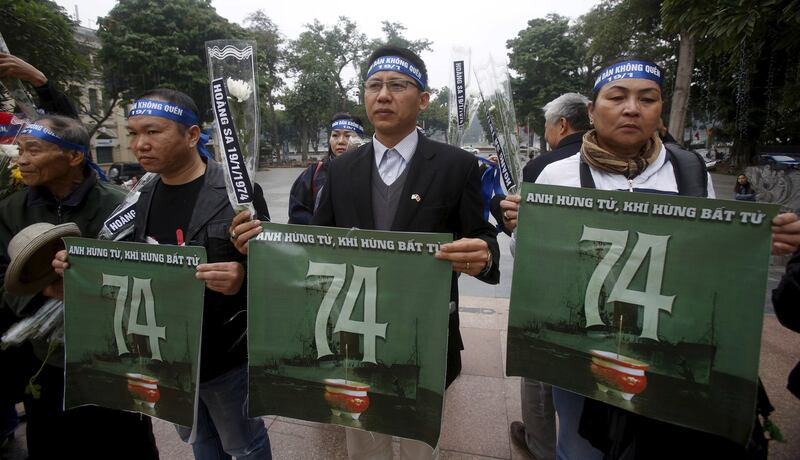How to solve the territorial disputes in the South China Sea that have flummoxed diplomats for decades and stoked fears of superpower conflict?
Actually, it’s quite simple, according to British scholar Bill Hayton. Just acknowledge that the current occupiers of each feature have the best claim to sovereignty over it.
Hayton, associate fellow in the Asia-Pacific Program at Chatham House, a U.K. think-tank, shared his views in a recent commentary in "Perspective," a publication of the Singapore-based ISEAS-Yusof Ishak Institute.
He argues that researchers now “know enough about the history of the South China Sea to resolve the competing territorial claims to the various rocks and reefs.”
The basic facts of the South China Sea disputes are well-known. Six parties – Brunei, China, Malaysia, the Philippines, Taiwan and Vietnam – have competing territorial claims. China holds the biggest claim, up to 90 percent of the sea, demarcated by a so-called nine-dash line. It says it has historical rights to the area – a position rejected by an international tribunal in 2016 that Beijing has refused to acknowledge. China’s stance has also put it at loggerheads with Western powers, particularly the U.S.
The disputes are not just about claims to the tiny islets and reefs scattered across the South China Sea, but also claims to jurisdiction over maritime zones associated with these features.
Because of that, a seventh country, Indonesia, also has a stake. Although it does not regard itself as a party to the South China Sea dispute, China claims historic rights to parts of the sea overlapping Indonesia’s exclusive economic zone.
Hayton says that of the six formal claimants, all claim at least one islet, and “a few islets are claimed by at least five states.” The rival claims have always been thought to be “too complicated to ever sort out.”
“There are too many rocks and reefs, too many claimants, too much history. Trying to understand and disentangle all the overlapping claims is just impossible, or so people thought,” said Hayton.
“I don’t think that’s true,” he said.
"Territorial issues in the South China Sea only started in the beginning of the 20th century so you don't have to look at thousands of years of history."

The role of the International Court of Justice
“The real problem is different claimants have framed their claims to claims to island groups. It would be very hard to try to work out who has the best claim to the whole island group,” Hayton explained.
China and Vietnam, for example, claim the whole of the Paracel and Spratly island chains.
“But once you try to disentangle and desegregate the claims and look at who has the best claim to specific features, then things become a lot easier.”
“No particular country, or state or regime ever controlled the whole of the South China Sea,” he said.
In Hayton’s opinion, breaking down expansive claims to entire island groups into specific claims to named features would open a route to compromise and the resolution of the disputes.
The scholar pointed out that there have been successful precedents in Southeast Asia. Indonesia and Malaysia resolved their dispute over the islands of Ligitan and Sipadan in 2002; as did Malaysia and Singapore over three sets of uninhabited rocks in the Singapore Straits in 2008. In both cases, the International Court of Justice (ICJ) played an important role.
“By ruling out vague claims to sovereignty “from time immemorial” and demanding specific evidence of physical acts of administration, the ICJ also gave the South China Sea claimants a route out of their impasse,” Hayton suggested.
The historical evidence of physical acts of administration on the disputed rocks and reefs suggests, with a few exceptions, that the current occupiers of each feature have the best claim to sovereignty over it, according to the British scholar.
The main exception would be the Paracel Islands where Vietnam occupied about a half until China took over in 1974 after a bloody battle that saw 74 Vietnamese soldiers killed.
“Southeast Asian states have an interest in recognising each other’s de facto occupation of specific features and then presenting a united position to China,” Hayton added.
In the case some countries are unwilling to make use of the ICJ and international law, he suggested that non-governmental organisations could get involved to create a so-called ‘Track Two Tribunal’. Track two typically describes informal or unofficial discussions by people outside of government to help find solutions to complex diplomatic issues.
Hayton said they could “collect rival pieces of evidence, test the claimants’ legal arguments, and present the likely outcomes of any future international court hearing to the claimants and their publics.”

‘Difficult tasks’
Hayton, however, admitted that the process would not be easy.
“Populations in different countries would be claiming that this is some terrible sell-out but frankly, all of the countries are working on the basis that this is the status quo that they’re going to accept. They need to turn that into a political commitment,” he said.
Hayton’s proposal “would have merit in an ideal world,” said Mark Valencia, a scholar at the Chinese National Institute for South China Sea Studies.
“But unfortunately we do not live in an ideal world and nationalist-infused domestic politics would likely prove a fatal stumbling block to acceptance and implementation of this proposal,” Valencia said, adding that most politicians in Southeast Asian countries “would try to stay as far away as possible.”
The maritime analyst also warned that since China would not accept and adhere to a formal arbitration ruling against it for maritime space, “it is highly unlikely to accept the verdict of an unofficial Track Two Tribunal regarding territory.”
Furthermore, the idea that each claimant keeps what it currently occupies and drops its claims to other features has been proposed before without any takers, he said.

